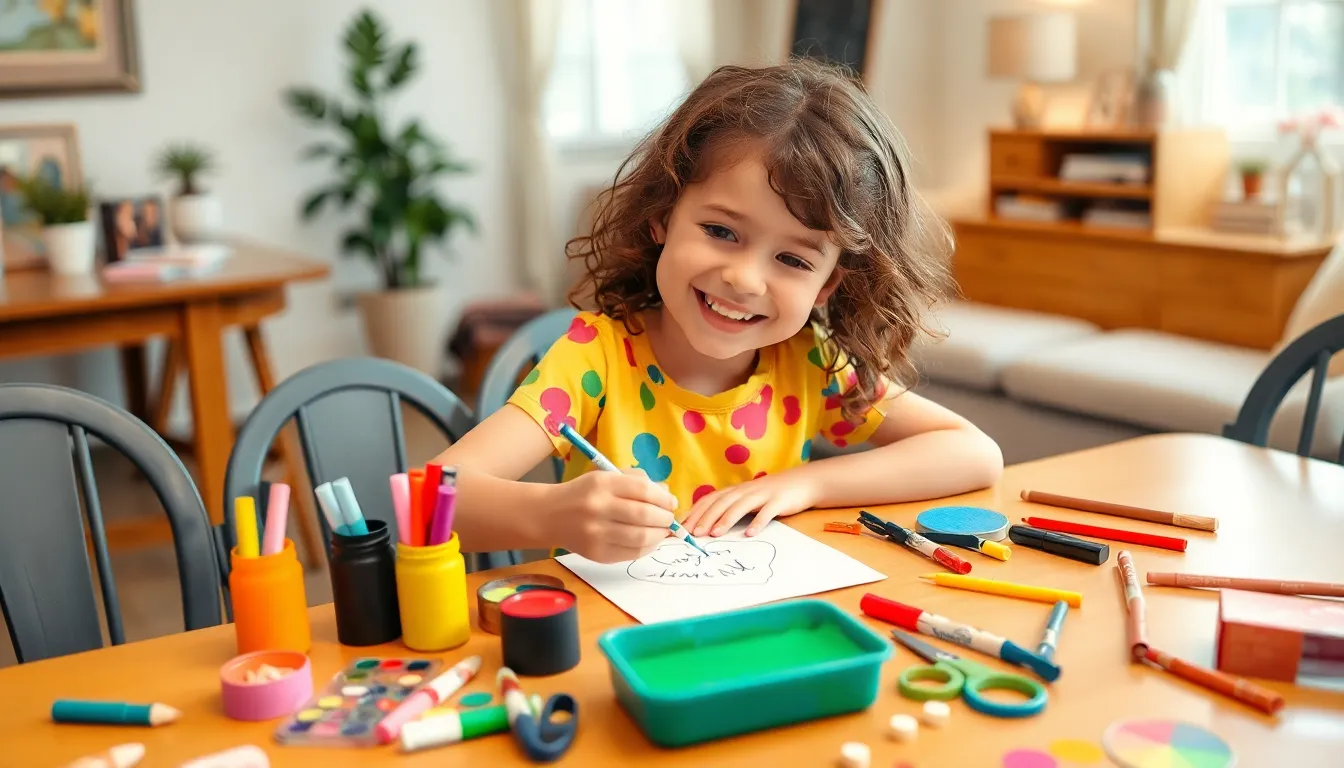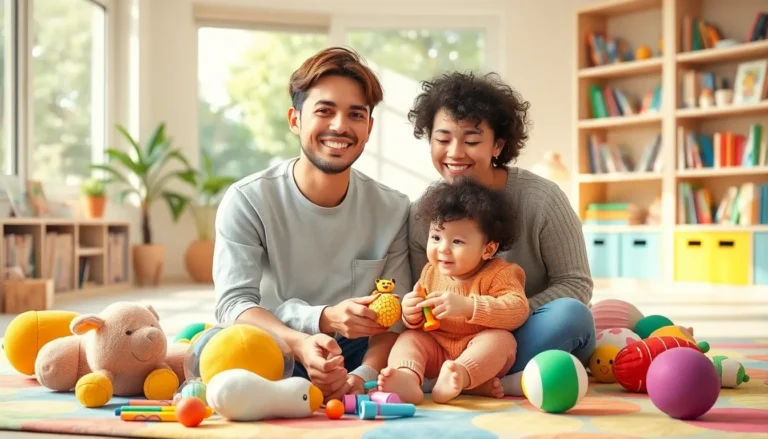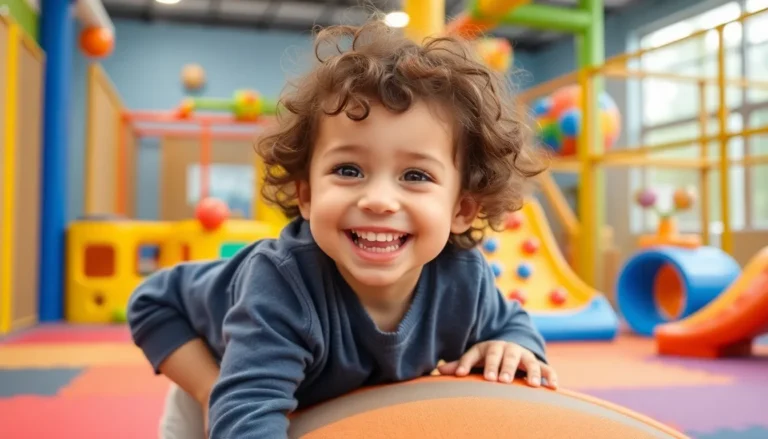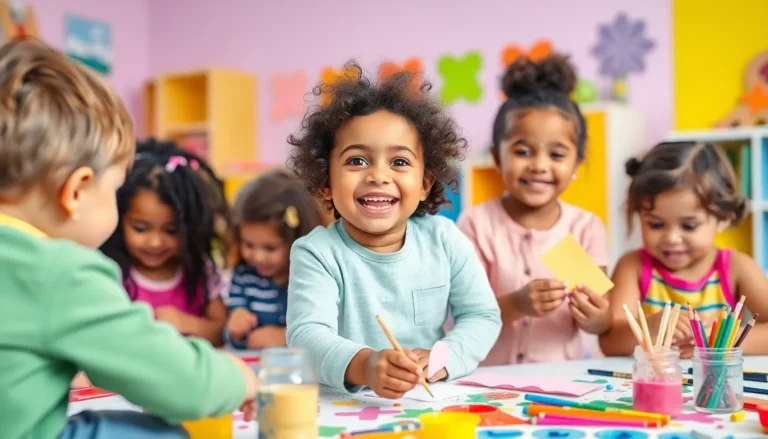When the weather outside is frightful and kids are bouncing off the walls, finding fun indoor activities can feel like a game of hide and seek. But fear not! With a little creativity, parents can transform their living rooms into magical playgrounds. Indoor activities not only keep kids entertained but also spark their imagination and creativity.
Indoor Activity For Kids
Indoor activities offer numerous benefits that enhance a child’s overall development. Engaging in structured play fosters creativity while ensuring kids remain entertained during challenging weather.
Physical Development
Activities like dance or obstacle courses promote gross motor skills. Kids build strength, balance, and coordination through movement. Activities involving fine motor skills, such as arts and crafts, help enhance dexterity and hand-eye coordination. Prioritizing these activities contributes to a child’s physical fitness. Evidence shows that regular active play reduces the risk of obesity in children. Moreover, indoor games like yoga or interactive video games provide a fun way to get kids moving while they stay indoors.
Mental Stimulation
Indoor activities also deliver substantial mental stimulation. Engaging in puzzles or board games challenges children’s cognitive abilities and problem-solving skills. Creative tasks inspire imaginative thinking, which is crucial for cognitive development. Additionally, indoor activities encourage teamwork and communication through group games or collaborative projects. Research indicates that mental engagement during play significantly enhances focus and attention spans. Mind-stimulating activities encourage curiosity while fostering a love for learning that extends beyond playtime.
Creative Indoor Activities
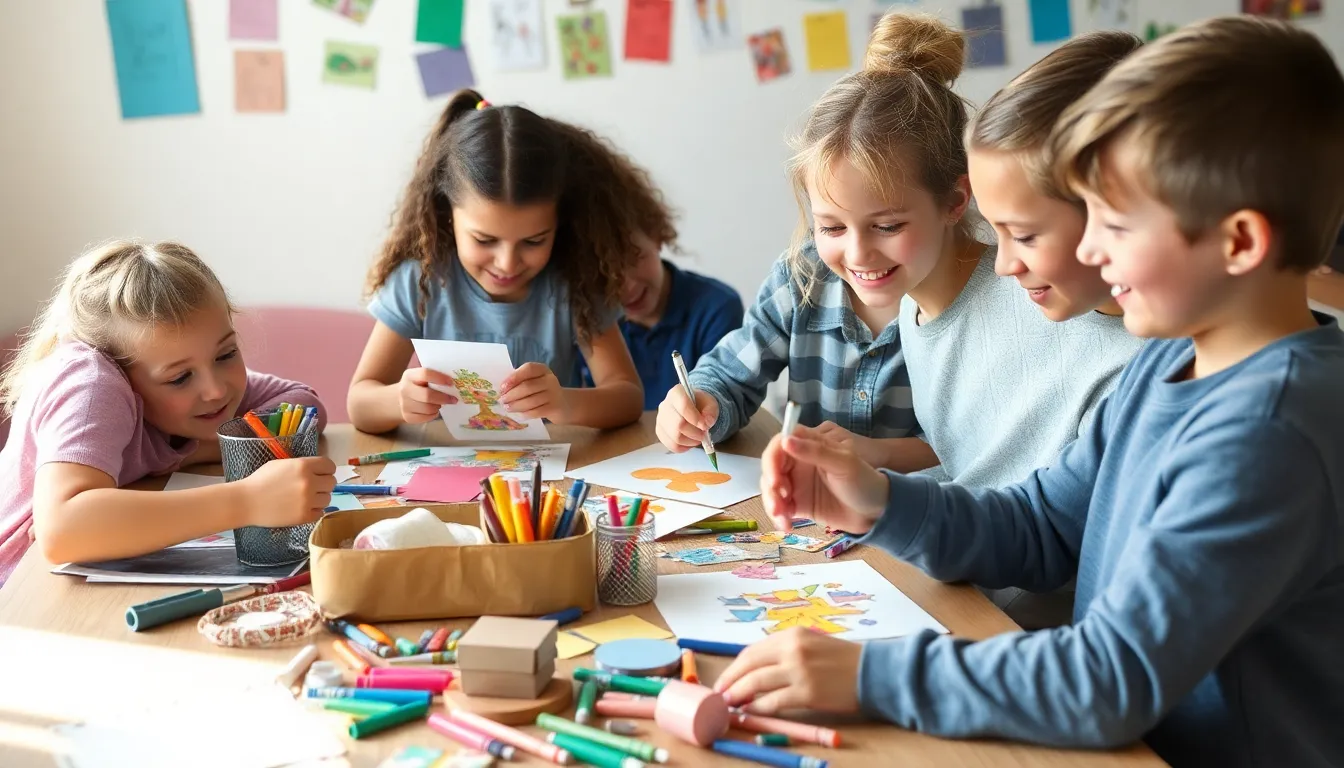
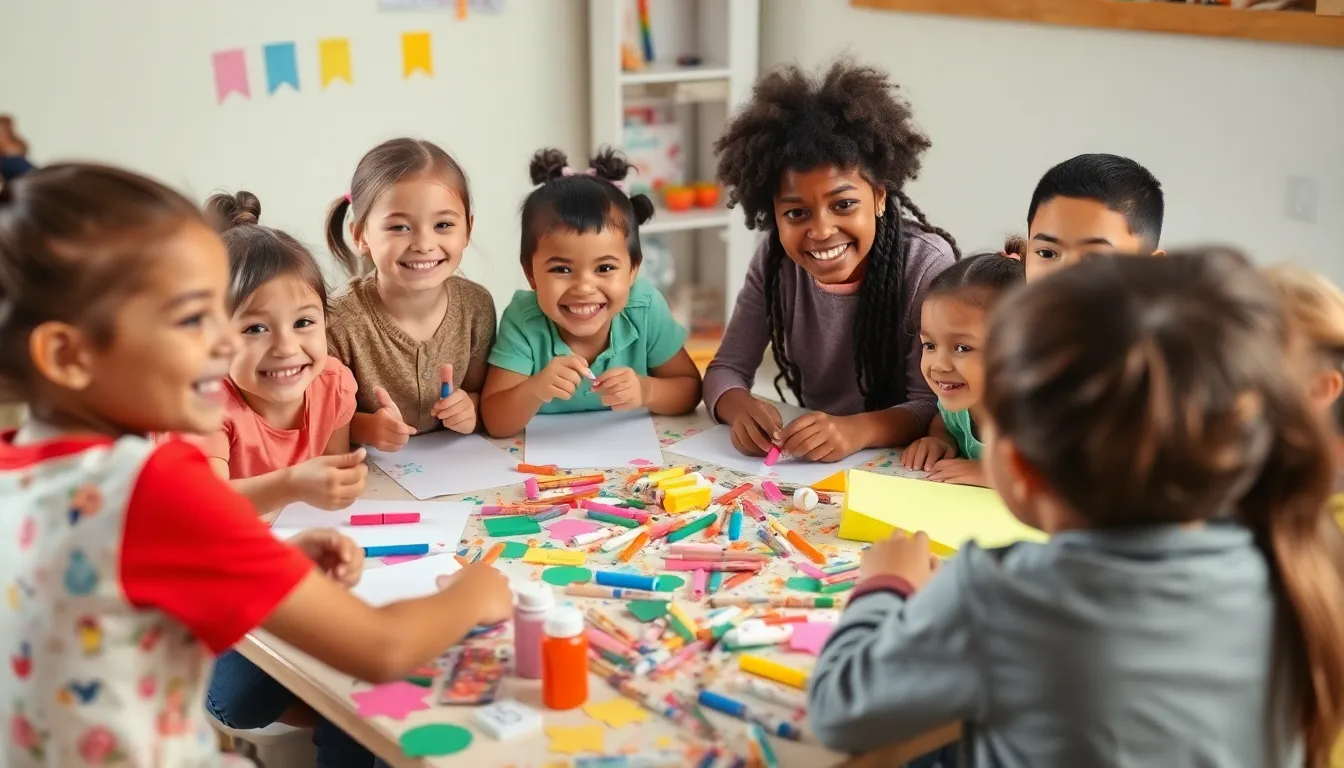
Engaging kids in indoor activities fosters creativity and promotes development. Several creative options encourage imaginative play and skill enhancement.
Arts And Crafts
Crafting activities capture children’s interest and stimulate creativity. Supplies such as paper, markers, glue, and recycled materials provide endless possibilities. Children can create handmade greeting cards, colorful paintings, or intricate collages. Incorporating seasonal themes can make projects timely and fun. Encouraging collaborative projects enhances social skills and teamwork, as kids share ideas and resources. Developing fine motor skills happens as they cut, glue, and design. Additionally, displaying completed projects boosts confidence and pride.
DIY Projects
DIY projects offer kids an exciting way to transform ordinary materials into imaginative creations. Basic supplies such as cardboard boxes, straws, and scissors enable countless possibilities. Constructing bird feeders from plastic bottles supports both creativity and environmental awareness. Building model rockets can introduce basic principles of physics while providing hands-on learning. Parent-child collaboration fosters relationships and communication skills. Completing projects enhances problem-solving abilities, as children navigate challenges along the way. DIY projects also result in tangible items that boost their sense of accomplishment.
Educational Indoor Activities
Engaging children with educational indoor activities fosters curiosity and enhances learning. These activities not only entertain but also sharpen skills and knowledge.
Science Experiments
Conducting simple science experiments captivates young minds. Examples include creating vinegar and baking soda volcanoes or growing crystals with sugar. These experiments introduce basic concepts of chemistry and biology through hands-on learning. Parents can guide children as they explore scientific principles in a fun, interactive way. Observing reactions encourages critical thinking. Connecting outcomes to real-world applications deepens understanding. Safety should always come first; appropriate supervision ensures a secure learning environment.
Interactive Learning Games
Playing interactive learning games provides an exciting way for kids to grasp new concepts. Games like trivia quizzes and math bingo make learning enjoyable. Incorporating online educational platforms can expand access to a variety of subjects. Collaborative gameplay emphasizes teamwork while honing communication skills. Using age-appropriate content keeps children engaged and motivated. Additionally, parents can participate, creating opportunities for bonding. Sparking interest in subjects through gameplay encourages a lifelong passion for learning.
Active Indoor Games
Active indoor games engage children physically and mentally, making them ideal for transforming a confined space into an energetic playground.
Obstacle Courses
Creating an obstacle course requires minimal materials. Use cushions, furniture, and any available items to set up challenges. One parent might place cushions on the floor to jump over, while another can set chairs to crawl under. Kids enjoy racing against the clock. Encouraging children to navigate the course multiple times builds endurance and improves coordination. Adding variations, like hopscotch or spinning in circles, keeps the activity exciting and fresh. Incorporating teamwork effectively promotes social skills. Kids can collaborate to overcome obstacles and time each other, fostering a supportive atmosphere.
Dance Parties
Dance parties transform any room into a lively gathering. Simply selecting upbeat music sets a fun tone, allowing kids to express themselves through movement. They can learn simple dance moves, adding creativity and rhythm to the activity. One strategy involves teaching a few coordinated dances, while another lets children freely showcase their individual styles. Incorporating dance challenges, like freeze dance, adds an element of surprise and competition. These lively sessions enhance cardiovascular health, boost mood, and increase physical fitness. Engaging in group dances fosters camaraderie and strengthens family bonds.
Quiet Indoor Activities
Quiet indoor activities provide a peaceful yet engaging environment for children. These activities stimulate imagination and focus while offering a calming atmosphere.
Reading Nook
Creating a reading nook encourages children to dive into the world of books. Choose soft cushions and cozy blankets to make the space inviting. Stock the nook with various age-appropriate books, fostering a love for reading. Incorporating a small lamp enhances the atmosphere, making it easier to read. Daily reading sessions boost vocabulary and comprehension skills, cultivating critical thinking.
Puzzles And Board Games
Puzzles and board games offer excellent opportunities for quiet engagement. Select puzzles that challenge different age groups, ensuring everyone can participate. Board games promote strategy, teamwork, and critical thinking skills. Families can bond while playing games like Scrabble or chess, enhancing communication and problem-solving abilities. Set aside time for these activities to create lasting memories around the table.

